Oh so pretty to see these glowing red rowan berries hanging ripe for the picking in the autumn/fall, but these beauties require quite a bit of preparation before consumption.
Good Food Revolution Health Warning:
Before we go any further, please do not consume rowan berries before cooking them throughly and making jelly.
Failure to do this will most probably result in a dose of the skoot gastric distress.
They aren’t really meant for snacking per se.
For over a decade or so I have observed that as a culture we are becoming less and less attached to the earth that supports us with each passing day, and indeed it was co-founder Malcolm Jolley’s and my own mutual concerns about this that led to the founding of Good Food Revolution way back in 2010.
Today, when we get hungry for protein, most run to the supermarket and pick up a pack of shrink-wrapped meat, seldom giving a second thought as to how that meat got to the grocery shelf. And so, with a view to getting closer to the source of my food than most would be comfortable with, I decided in the fall of 2016 (mere days after the US election – no coincidence there) to learn how to hunt.
Running in parallel to my new found interest (read: midlife crisis) came a related passion for self-sufficiency that upon occasion flirted with the concept of survivalism. Being a voracious information sponge, I gorged upon mountains of books and websites, and in my deep-dives I read over and over again that if the world did really fall apart and one had to live off the land, it wouldn’t be big game that one would be surviving upon, it would be the smaller critters: rabbit, hare, squirrel, and the lowly frog, supplemented by foraged plants. More recently we have explored edible (as well as toxic) fungi.
This time around we are going to look into the common rowan berry, the fruit of the shrubs or trees in the genus Sorbus of the rose family, Rosaceae, AKA the fruit of the Mountain Ash tree, and how to prepare the most delicious jelly from them. We are currently at the end of the rowan’s annual cycle, but it has taken me a few months to hone the recipe/technique. Sure, we are moving a little more into homesteading territory here, but why not? I needed to brush up on my, quite honestly, woeful canning skills.

Looking at these berries and realising the fiddly work that lay ahead of me, I found myself becoming rather envious of the destemmers lying idle at my friends’ wineries.
There is nothing that reminds me more of fall/autumn than the aroma of ripe rowan berries crushed underfoot. As a young lad in Scotland I vividly recall enjoying that particular smell as our suburban street was blessed with many trees bearing these strikingly coloured berries. Watching so many species of birds heartily enjoying these berries, I oft wondered just how they would taste in their raw state. Upon inquiring with my mum, I was informed to give them a wide berth as they would seriously upset my stomach. And she wasn’t wrong.
Rowan berries contain high levels of parasorbic acid, and this is not a good thing, as when said berries are consumed raw, this diuretic, laxative, and highly astringent compound will most probably give you, to quote my mum, “a dose of the scoot” (read: gastric distress, a term I have been using pretty regularly in this column).
Despite this, these berries are nutritional powerhouses, home to all manner of organic acids, carotenoids, tanning substances, carbohydrates (the most important of them being sugar alcohol – sorbitol), vitamin C, and provitamin A, and have been reported to stimulate the intestines (no surprise there, Sherlock), have anti-inflammatory properties on both the gastric and intestinal mucosa (interesting), soothe liver irritations (I’ll have some of that), help with kidney and gallstone disease (cool, yeah, I’m in), and help with chronic digestive disorders (bonus!). Many are the stories about their magic powers, as they are trees that are steeped in history with links going right back to the druids of Celtic Britain.
So I guess it’s just as well that cooking and exposure to moisture convert the toxic parasorbic acid to the benign food preservative sorbic acid.
The resultant jelly also happens to be one of the tastiest preserves known to humankind, the perfect equilibrium between sweetness and bitterness, the delicate astringency making it the perfect foil for all manner of cheeses, as well as lamb, game meats, and hearty sausages.
Once tasted, you’ll be thinking “Where has this freaking ambrosia been all my life?”… or perhaps it’s just me.
I’ve read on the interwebs that fruits harvested after frost are usually less bitter, but here in Ontario if one waits until first frost the birds will have devoured almost everything bar the saddest looking berries. Much like with grapes, the trick is to harvest JUST before the avian brain works out that they are at that perfect level of physiological ripeness.
Trial and error over the past month or so has taught me that fastidiously cleaning the berries up as one harvests (discarding as many stems, shrivelled berries, leaves, and innumerable insects) is definitely best practice, as cleaning them up in the kitchen is an absolute bastard ballache of a task, and takes a hell of a lot longer than one would expect; I was pining for a loan of a destemmer. Saying that, having a few stems in there isn’t all bad, as I quite enjoy that added astringency in the end product. Just don’t be lazy and overdo the stem component. Around 1o small stems is acceptable, but any more and the jelly will taste akin to chewing tobacco.
Once tidied up a bit, give them a damn good water bath.

A really good water bath is essential to rid the berries of any acquired detritus (bird poop, pollution, hidden earwigs, leaves etc.)
Measure out around 450g of the cleaned berries and place them in a big pot.
Now comes my favourite bit…
Crush the berries with a potato masher, and really give ‘er, as they say.
The enchantingly potent aromatic melange that rises from these crushed berries is like nothing else on this earth, and takes me right back to being a wee lad, such is the immense power of that peculiar olfactory memory for me.

Now this is the defining smell of fall/autumn for me, freshly crushed rowan berries. Takes me right back…
Prepare around 225g of apples (approximately half of the amount of the berries) by washing them and then chopping into quarters. It’s important to leave on the skins and use the cores here, as they help with the setting of the jelly due to their natural pectin content. Add these apple quarters to the pot, and fill with water until the fruit is just covered and no more.
I’ve come to realise that the addition of a few sprigs of fresh rosemary here adds a lovely complementary herbal note to the recipe.
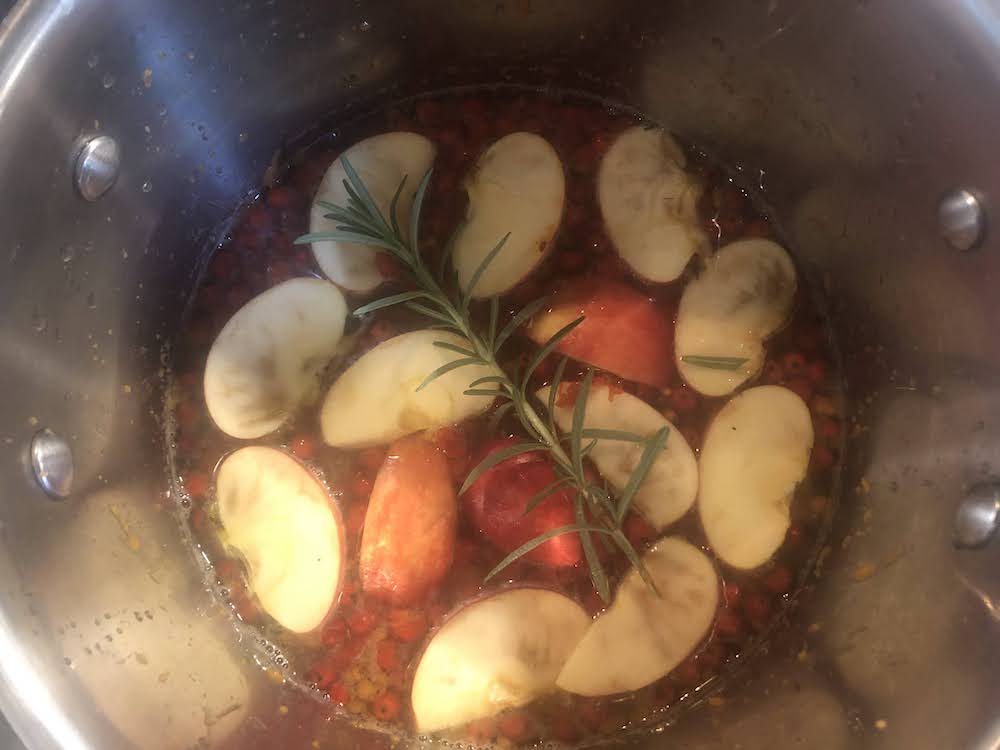
Just cover the fruit with water, as if you put in too much you’ll just have to spend time reducing all the excess liquid. Pro-tip: add a little fresh rosemary.
Bring the pot to the boil, reduce the heat to just above simmer, and cook for 20 – 25 minutes until the fruit is falling apart.
Now get in there with the masher again, and crush the berries and disintegrating apples. Miss this step at your peril, as it bring so much flavour to the party.
Carefully pour the contents of the pot into a jelly bag positioned on a stand over a bowl, and leave it for 12 hours or overnight.
DO NOT get impatient and try to push the liquid through the bag as this will lead to a cloudy jelly, and you don’t want that.
Also, be sure that your jelly bag is tied extremely tightly to the metal stand, as on my first attempt at this the bag fell into the bowl, covering both myself and the kitchen windows with sticky molten fruit purée which burned like napalm.
A lesson learned, right there, and I think I still have the scars to prove it.

Leave the jelly bag to fully drain into the bowl for a full 12 hours (or overnight). Patience is certainly a virtue at this stage of the proceedings.
All things going well you should have four cups of gorgeously-hued liquid.
If you have more, boil it down and reduce to four cups.
If you have less, pour boiling water over the fruity mush in the jelly back until you have four cups.
At this point get a large pot boiling and then simmering to sterilize your jars, lids, and bands, Ensure that the water level covers all the jars standing upright.
And place about six teaspoons in your freezer.
Bernardin have a natty little starter kit that one can find at Home Hardware for a pretty reasonable price. This includes 4 x 250 ml jars, lids, bands, a funnel for filling, a bubble removal tool, a silicon rack for the bottom of the pot, and the all-important jar lifter.
I’ve managed to set two batches of this jelly with the natural pectins found in the fruit, but I think the chance of this happening is very much to do with the type of apples one uses, so I’d recommend going down the classic pectin route.
Although one may be tempted by the idea of using a no sugar pectin, I’d strongly advise against this with rowan berries, as because of the inherent astringency and bitterness one requires a fair bit of sugar to balance everything out.
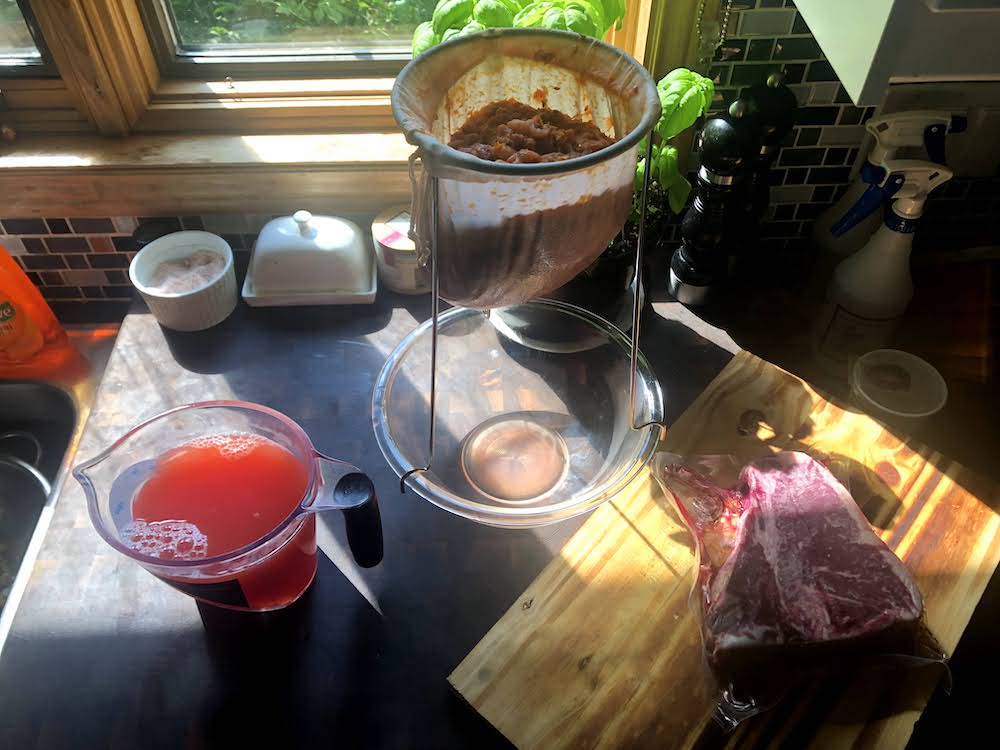
Because of the jelly bag not being properly secured to the stand and falling into the bowl, I didn’t quite get enough liquid from this batch, so had to pour some boiling water over the top of the jelly bag to make it up. Lovely colour here, from using some windfall red apples.
Depending upon the pectin one purchases, one will be following slightly different instructions regarding getting the jelly to set, but the basics are something like this:
- Add four cups of caster sugar and the juice of one lemon (extremely high in pectin)
- Bring to the boil
- Add a sachet of your pectin
- Bring to a hard boil, that is one that cannot be tempered with a wooden spoon
- Remove the sterilized jars, lids, and bands from the simmering water and place beside the stovetop, making sure to pour any excess water back into the pot of very hot water
- Maintain this for 10 minutes (be careful here, and keep stirring continually, as nobody wants to be cleaning up burnt jelly from their stovetop)
- Take one of the teaspoons from your freezer and use it to take a small amount of of the jelly from the pot
- Does it begin to set after about 10 seconds? If not, continue to hard boil the jelly and return to step 6. Repeat this until it sets on the cold teaspoon
- You did it! Remove the jelly from the heat
- Carefully distribute the extremely hot jelly between the assembled jars, leaving around 1/4 of an inch/1/2 a centimetre of clearance at the rim
- Drop a small sprig of fresh rosemary in each jar and a quick squeeze of lemon juice (even more pectin to help it on its merry way)
- Clean off any excess jelly on the jar rims
- Place the hot lids on the jars (oven gloves are a good idea here)
- Screw on the bands and hand tighten (oven gloves are a good idea here also)
- Using your jar lifter, carefully place the sealed jars back into the simmering water pot, try to keep the jars upright, and leave for 15 minutes to seal. Ensure that the water level covers all the jars here.
- Remove the jars from the simmering water and leave out for 12 hours to set completely
And that’s it.
Rowan berry jelly.
Enjoy.
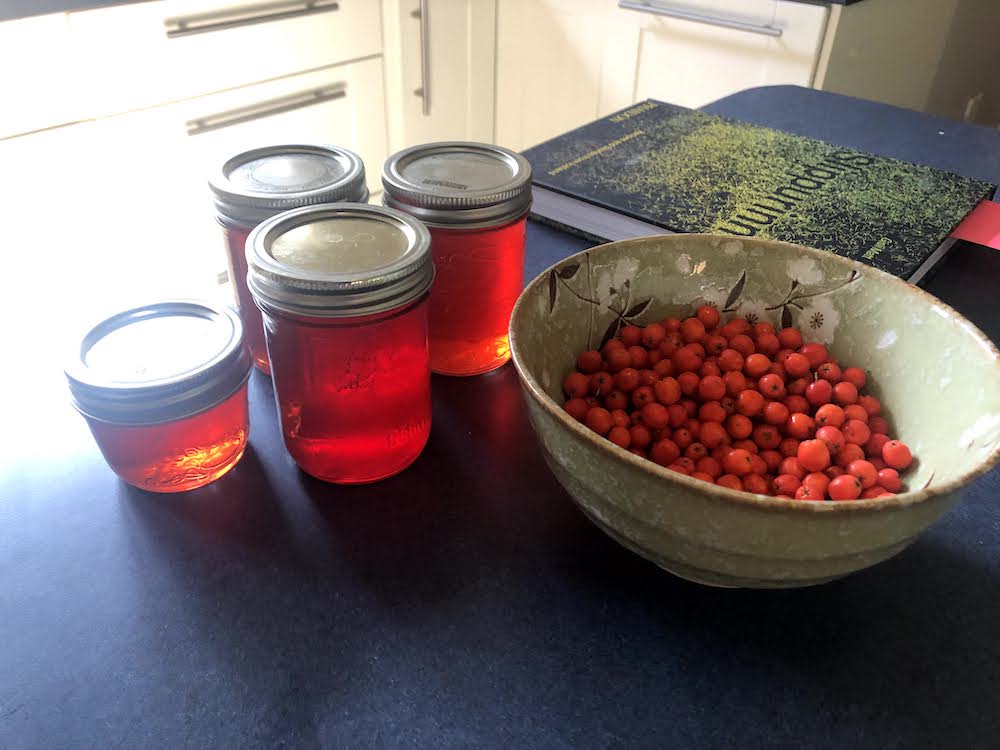
A real good food revelation for me, my first batch of rowan berry jelly.
Bar some random ice-fishing or me happening to bag an antlered deer this season, this column will be taking a well earned hiatus until the spring of 2022.
Happy foraging/hunting.



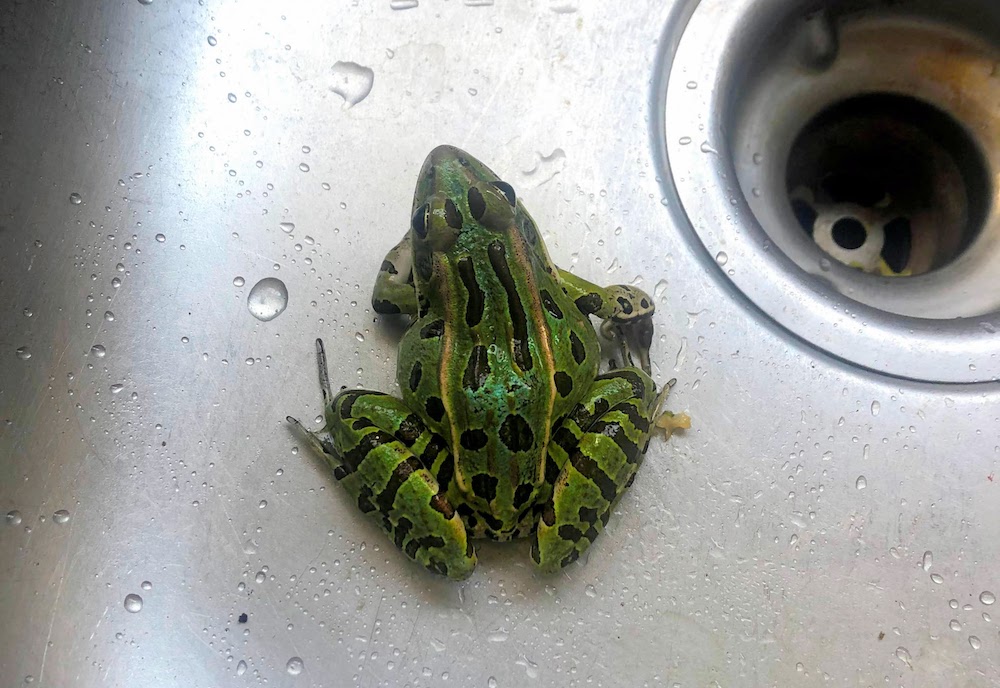

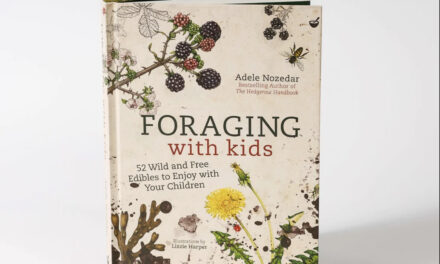
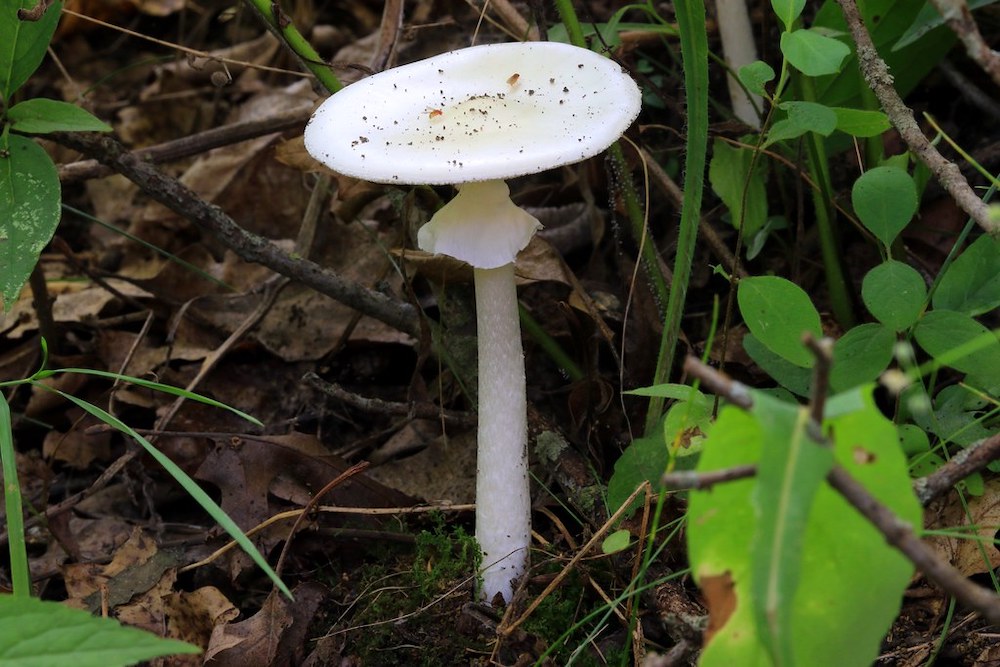

Love this! And I must say, that jelly was damned good!